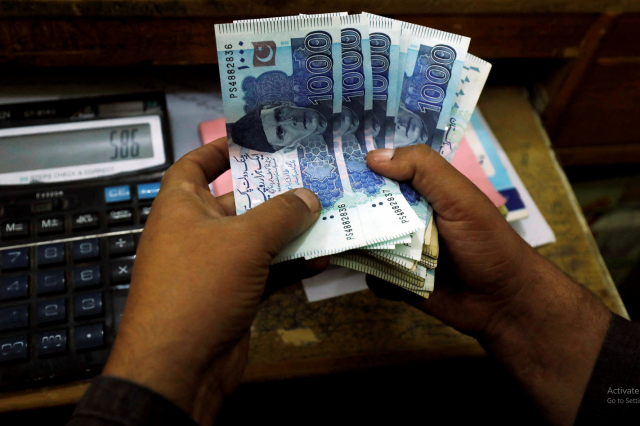Rupee continues gradual downtrend
Currency under pressure after widening of trade deficit in June

Pakistani currency inched down Rs0.03 and settled at Rs278.40 against the US dollar in the inter- bank market on Wednesday, maintaining its gradual downturn for the second consecutive day in the wake of higher demand for the foreign currency for imports.
The latest depreciation came after the government reported the widening of Pakistan’s trade deficit in June 2024 due to an increase in imports and a decrease in export earnings.
A significant jump of 17.43% in imports to $4.92 billion in June, as compared to the same month of last year, triggered speculation that demand for dollars for purchasing goods from overseas markets would increase. Import pressure is projected to grow slowly in the coming months.
A section of analysts, however, noted that Pakistan’s imports remained stable below $5 billion a month and import payments may not cross the threshold in the short run amid government’s control over unbridled purchase of goods from international markets.
At present, Pakistan’s foreign exchange reserves are standing below $9 billion, which are barely enough to finance two months of imports.
Market speculation suggests the rupee will lose further ground ahead of the next International Monetary Fund (IMF) loan programme. The government is expected to secure the bailout package by the end of July or early August. The government has worked out the aveage rupee-dollar parity at Rs295/$ for fiscal year 2024-25, indicating a depreciation of almost 6%, or Rs16.60, compared to the current level of Rs278.40/$.
The currency appreciated for the first time in three years in FY24, when it gained 2.75% to Rs278.34/$. Similarly, the trade deficit dropped by a notable 12% in FY24 with over 10% increase in export earnings and flat imports during the year.



















COMMENTS
Comments are moderated and generally will be posted if they are on-topic and not abusive.
For more information, please see our Comments FAQ